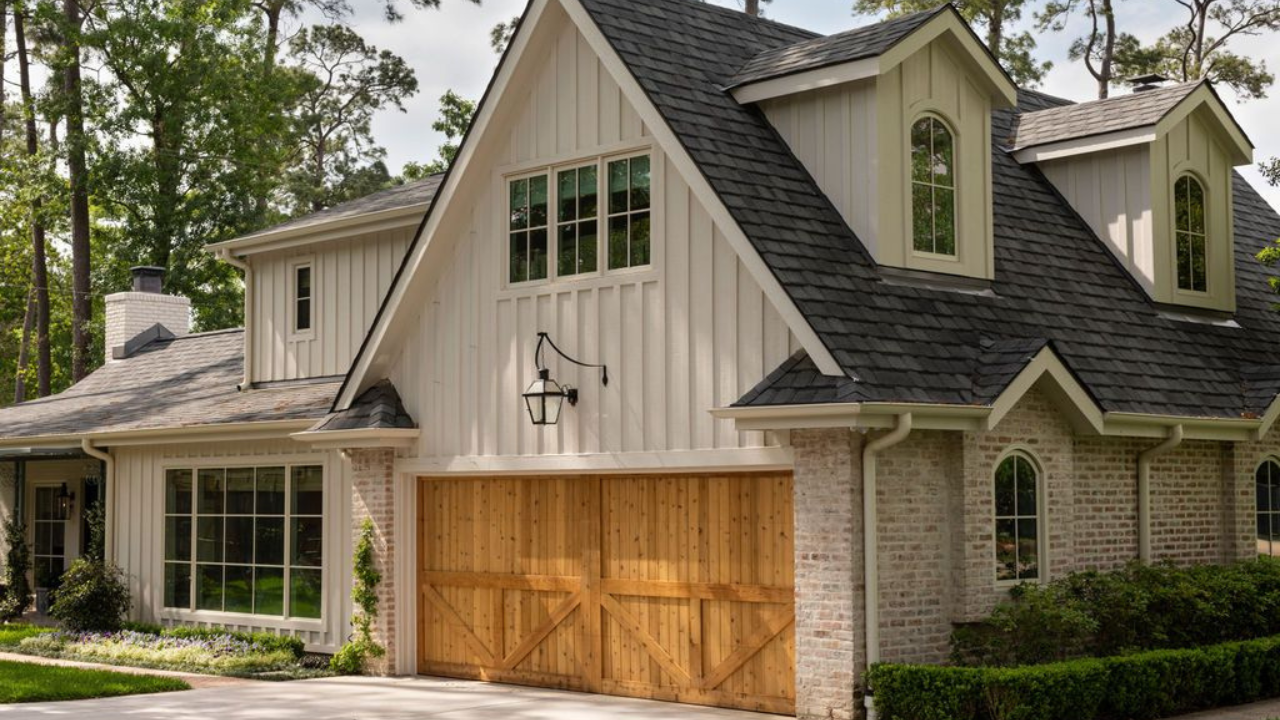From Miesian and Mid-Century Modern to Tudor Revival and Queen Anne, the greater Houston area is home to many historic homes. In the 19th and 20th centuries, Houston was also home to iconic architects like William Ward Watkin, John F. Staub, and Birdsall Briscoe. Some Houston historic homes are lovingly cared for by volunteers from Preservation Houston or the local heritage society. Others are beautifully renovated by design firms who protect historic elements while updating the homes for modern living.
Historic sites abound across Downtown Houston and throughout century-old suburban neighborhoods. In this post, we celebrate several styles of historic Houston homes built between the late 19th and mid-20th centuries. Whether bungalow-style homes or ornate Victorian mansions come to mind when you think about Houston historic houses, read on. You’ll learn all about the city’s rich architectural history.
Stay tuned for Part II of our three-part Historic Houses in Houston series, where we take a look at residential Revival architecture. In Part III, we will discuss early and mid-century modern architectural styles.
Architectural Styles of Historic Homes in Houston: Part I
Queen Anne
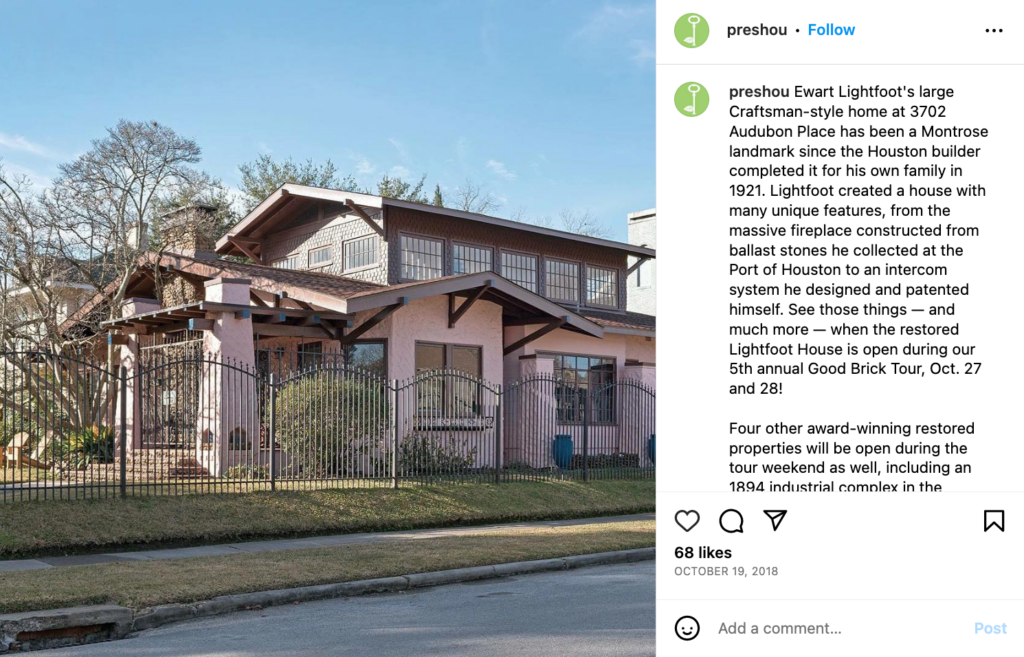
According to this resource from the National Park Service, Queen Anne architecture was popular in the United States between 1880 and 1910. Queen Anne homes “evolved out of the Colonial Revival” and Victorian styles.
Though they bear a resemblance to Victorian houses, Queen Anne homes are typically more whimsical and eclectic. They are known for their elaborate and asymmetrical exteriors. The Queen Anne pictured above is actually located in Galveston, but it is such an excellent example that we had to include it!
One distinctive feature of a Queen Anne-style home is the use of bold colors. Many of these houses feature bright, eye-catching hues such as reds, greens, and blues—often with intricate patterns or contrasting trim.
Queen Anne homes typically have multiple rooflines and gables. This gives them a whimsical and almost fairytale-like appearance. Their ornately decorated wrap-around porches are the perfect spot for people-watching or reading while enjoying one’s morning coffee.
This playful design is further emphasized by the use of turrets, towers, and bay windows, all of which add depth and dimension to the structure. Another defining feature of this style of architecture is the use of decorative elements such as ornate brackets, spindles, and balustrades. These details are often painted in bright colors to highlight their intricate designs. A mixture of different building materials is also common in Queen Annes.
Queen Anne Historic Houses in Houston
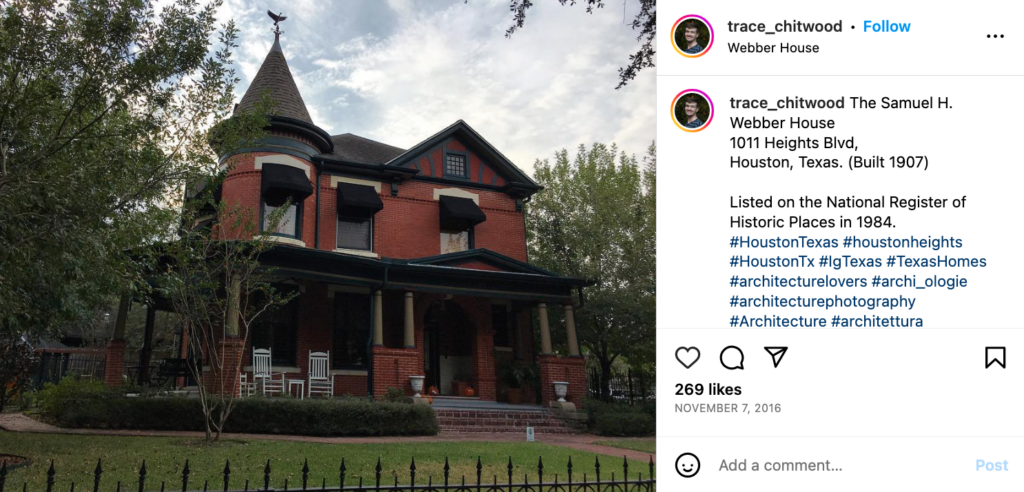
These historic homes can be found throughout Houston, Texas. Listed on the National Register of Historic Places, the John W. Anderson House is one example of a Queen Anne in Houston. Surrounded by mature trees, this Queen Anne cottage boasts a robin’s egg blue facade and a cozy front porch. With similar features to the 19th-century versions, Queen Anne Revival homes also dot Houston’s historic districts.
One of the most unusual Queen Annes in Houston is Webber House, built by a brick mason after whom the home was named. Constructed between 1907 and 1908, this home has a brick facade that travels from the pillar pedestals all the way up through the chimneys. Webber House was placed on the U.S. National Register of Historic Places in the 1980s. Enjoy a photo of the brick Queen Anne above, featured in a post by @trace_chitwood on Instagram.
Folk National and Folk Victorian
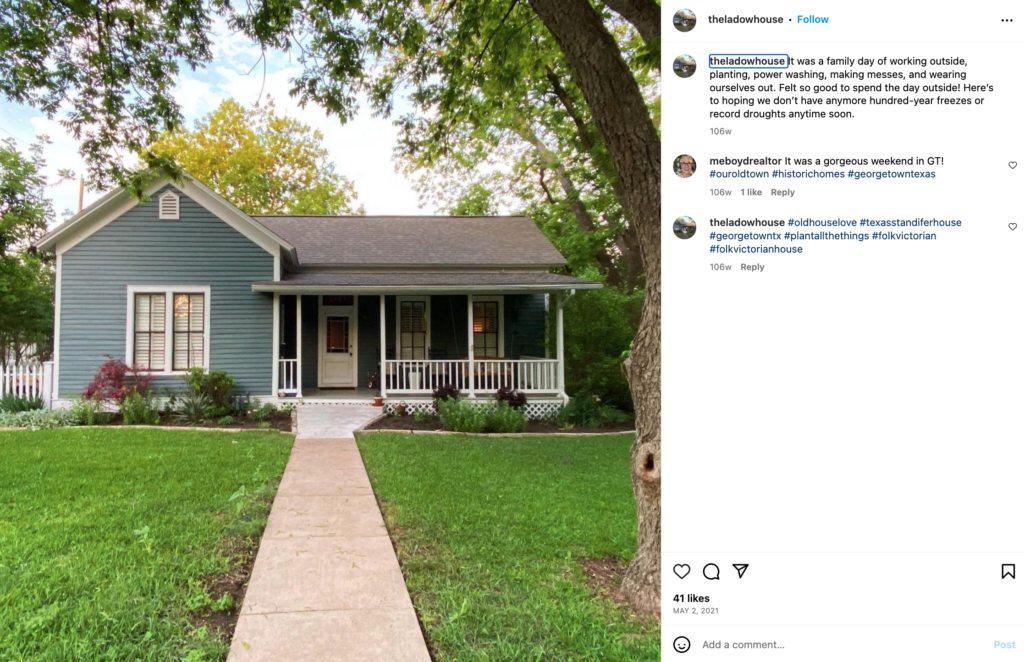
According to this PHS resource, Folk homes “were simple house forms based on the very earliest domestic structures in the United States.” Folk National and Folk Victorian houses were built from lightweight lumber that was shipped across our country via the transcontinental railroad. These homes coincided with the catalog houses and kit homes Sears sold at the time.
Far less expensive than the ornate styles that preceded them, Folk Victorian homes paid homage to Queen Anne, Craftsman, and other architectural designs of the day. Details were often more two-dimensional than the fanciful carved details of earlier architectural styles. They appear flattened when compared with the carved borders and corners of a Queen Anne. This was not done solely to minimize cost, but to appeal to the streamlined aesthetic of contemporary tastes.
Today, Folk Victorian and Folk National are sometimes used interchangeably. Houston Heights is home to many Folk National and Folk Victorian homes, but the Folk Victorian pictured above is from Georgetown.
Craftsman
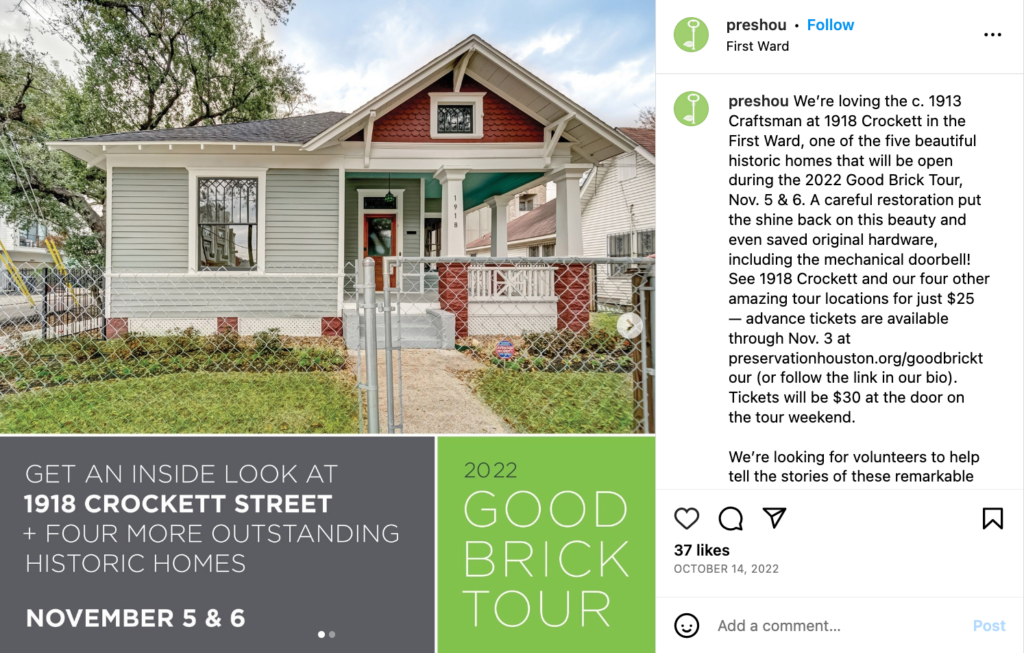
Pushing back against the frills of Victorian architecture, Craftsman homes emerged in the late 19th century as part of the Arts & Crafts Movement. Compared to Victorian homes, Craftsman homes are simpler and more focused on function than ornamentation. From the exposed rafters to the intricate woodwork, these homes exude a sense of warmth and character. They are beautifully designed but retain a sense of the handmade.
One of the most notable characteristics of a craftsman house is its use of natural materials. Wood, stone, and brick are commonly used in the construction of these homes, giving them a warm and inviting feel. The exterior of a Craftsman house often features exposed rafters, decorative brackets, and tapered columns, all of which add to its charm.
Inside, a craftsman house typically has an open floor plan with plenty of natural light. Large windows and glass doors allow sunlight to flood into the living spaces, creating a bright and airy atmosphere. Built-in cabinetry and shelving reinforce the hand-crafted feel and open-concept living space of a Craftsman house. Many Craftsman homes are single-story bungalows, but some do have a second floor.
Another hallmark of a Craftsman house is its emphasis on craftsmanship. Every aspect of the home is carefully crafted by skilled artisans, from intricate woodwork to handcrafted tilework. This attention to detail gives each craftsman house a unique character and personality that cannot be replicated.
Craftsman Historic Houses in Houston
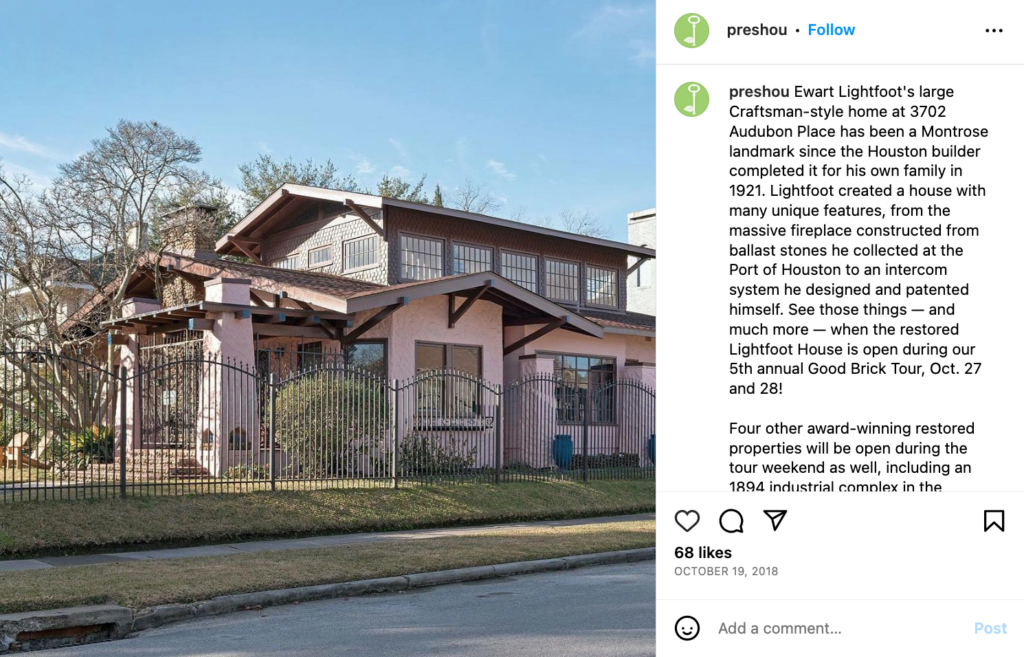
A number of Houston neighborhoods — including Audubon Place and Historic Woodland Heights — are home to Craftsman houses. Craftsman houses can be found in many of the century-old neighborhoods of Houston.
Pictured above in a post from Preservation Houston, Ewart Lightfoot’s 1921 Craftsman home at 3702 Audubon Place is one famous example. Part of Preservation Houston’s Good Brick Tour, the 1913 Craftsman at 1918 Crockett in the First Ward is another – albeit smaller – home of this style.
In Houston, many Craftsman houses are bungalows, but some are larger two-story structures. These bungalows often combine features of Queen Anne and Folk Victorian with quintessentially Arts & Crafts elements.
Prairie
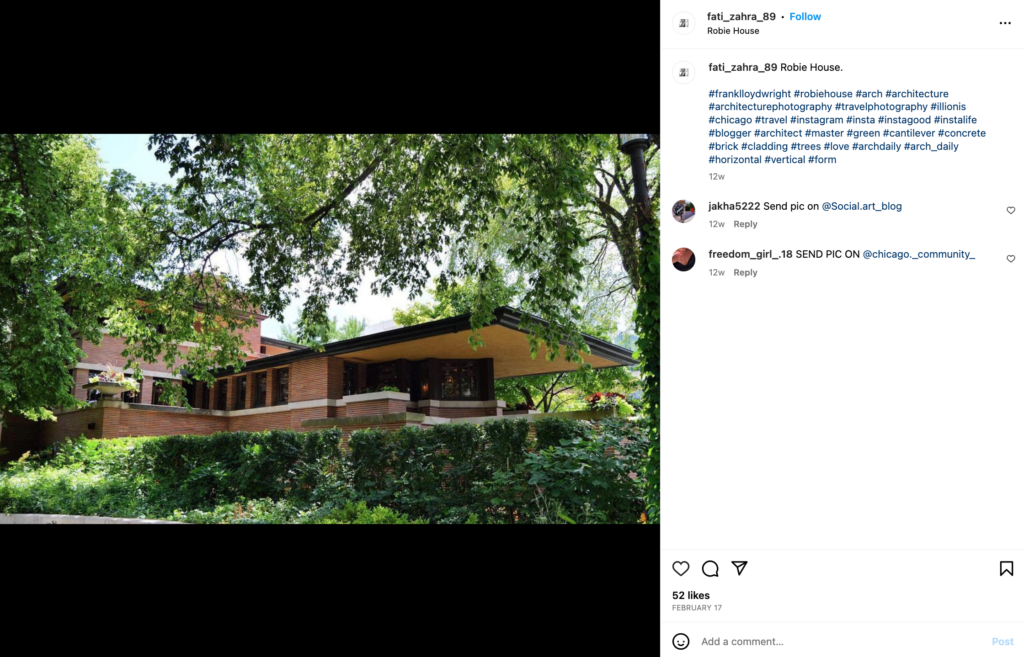
Pioneered by Frank Lloyd Wright in the late 19th century, Prairie style houses have a unique regional look that sets them apart. Hallmarks include distinct horizontal lines, low-pitched roofs, and open floor plans. These features were designed to blend seamlessly with the flat landscapes of the American Midwest. Pictured above is one of Wright’s best-known Prairie-style homes: the Robie House.
Like Craftsman homes, one of the most notable features of a Prairie style house is its emphasis on natural materials. The use of wood, stone, and brick in their construction gives these homes a warm, inviting feel.
Another standout feature is the way they prioritize function over form. This means that everything in a prairie style home has a purpose and nothing feels out of place or unnecessary.
Another feature that makes Prairie-style homes so popular is their ability to let in ample amounts of natural light. This is due to expansive windows and doors which often stretch across entire walls. These windows not only add to the aesthetic appeal of the house. When properly placed, they can also save energy costs by minimizing the need for artificial lighting and passively heating the home during daylight hours.
Yet another feature worth mentioning is the spaciousness and openness of Prairie-style homes. Prairie-style homes typically have large, interconnected living spaces instead of small, boxed-off rooms. This provides more flexibility when designing the interior layout of the house, making it easier to create spaces that are both private and shared.
We noted above that many Prairie-style homes were designed by Frank Lloyd Wright and his contemporaries. As such, you’ll find unique details like built-in furniture, stained glass windows, and intricate woodwork throughout the house. In some homes, light fixtures were custom-designed specifically for the structure itself.
Prairie-Style Houses in Houston
Of all the neighborhoods in Houston, Prairie homes are particularly common in the Audubon Place Historic District. This Houston historic district was originally developed in the early 20th century. It was planned around the same time that the Port of Houston and other landmarks were built.
This neighborhood is also home to Craftsman Bungalows and American Four Squares of the same period. However, the most famous historic home in Audubon Place is neither a Prairie, Craftsman Bungalow, or Four-Square like those that surround it.
Built in 1912, the Link-Lee Mansion is a paragon of Neoclassical design. According to Anne Lee Phillips in a Paper City article, the mansion was “constructed of limestone…cream brick; and enameled terra cotta.” The home also boasts “gray glazed tiles and a green-glazed tile roof.”
Designed in part by Alfred C. Finn under the auspices of Sanguinet & Staats, the home was a marvel in Montrose. At the time of publication, the mansion was in dire need of structural and aesthetic repairs. The next post in our Historic Houston Homes series will highlight several Neoclassical homes in the area.
Funnily enough, one of the most notable historic homes in Woodland Heights — just north of White Oak Bayou — is actually a Prairie-style home. According to this resource from Woodland Heights Civic Association, the Wilson Home is the only Prairie-style house in Woodland Heights. Built and inhabited by developer William A. Wilson, the Association deems this house the “largest and grandest home in the Woodland Heights.”
Restoring and Renovating Historic Houston Homes
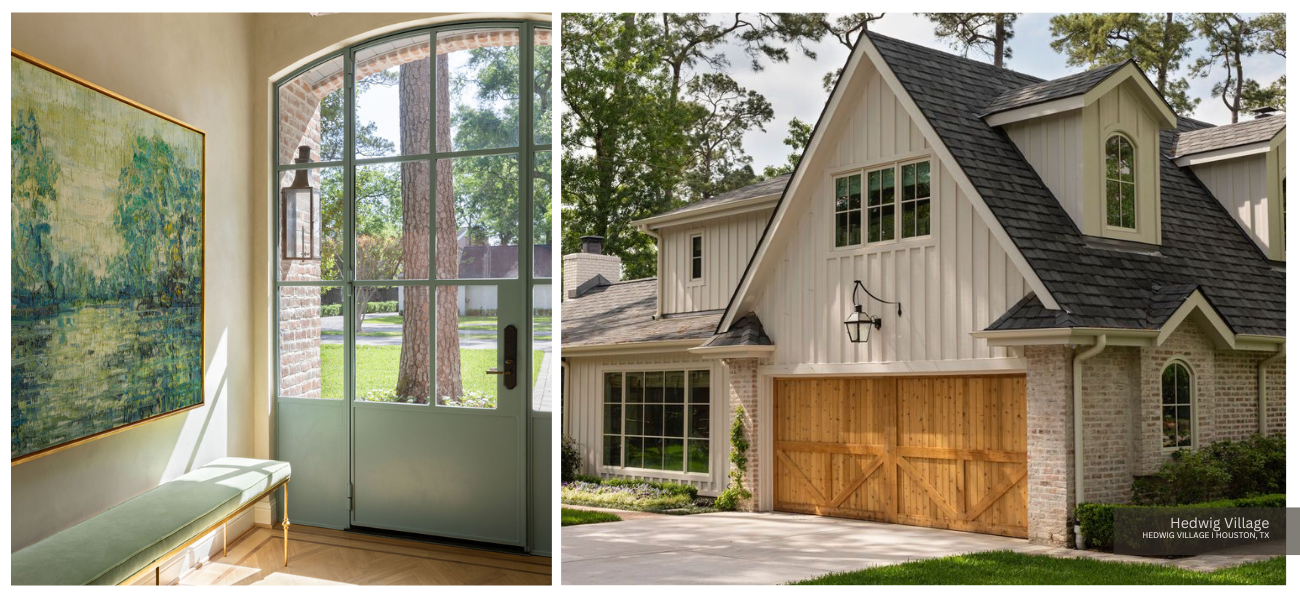
When it comes to restoring these historic properties, Houston’s community is committed to preserving key elements while optimizing functionality for modern homeowners. From the heart of Downtown to Broadacres and Boulevard Oaks, local advocacy groups help restore Queen Annes, Craftsmans, and more. In Houston, homeowners are empowered to return properties to their original glory while still meeting modern lifestyles and building codes.
Owning a historic home is both rewarding and complex. Homeowners simultaneously take great joy in restoring historic houses and stress about the issues a renovation might uncover. When purchasing or restoring a historic property, it’s important to do your research and work with experienced professionals.
The right design firm will understand the unique challenges that come with working on a century-old structure. Reach out to the team at Laura U Design Collective to learn more about the historic home remodeling process.
In the meantime, consult this post about the Do’s and Don’ts of Historic Home Restoration & Remodeling. And stay tuned for Parts II and III of our Styles of Historic Houses in Houston series!


